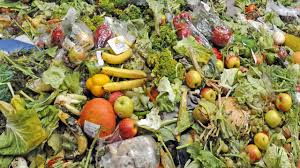INTRODUCTION
When it comes to Nigerian food, dishes like jollof rice, pounded yam, and suya often steal the spotlight. But tucked quietly into the heart of Yoruba culinary tradition is Ekuru—a simple, steamed bean cake that many Nigerians may have forgotten, yet it remains a comfort dish with deep roots.
What is Ekuru?
Ekuru is sometimes described as the “cousin” of moi moi, but unlike its spiced and colourful counterpart, Ekuru is traditionally plain, white, and unseasoned. It is made from peeled, ground black-eyed beans or brown beans, blended with water into a smooth paste, then steamed without oil or elaborate seasoning.
The result? A soft, mildly flavoured bean pudding that serves as a blank canvas, waiting to be paired with a bold, peppery sauce to bring out its full character.
Ingredients
● Peeled black-eyed beans
● Water
● Salt (optional)
● Spicy pepper sauce (for serving)
How Ekuru is Made
1. Soak and Peel the Beans: The beans are soaked in water and peeled (just like for moi moi).
2. Blend to a Smooth Paste: The beans are blended with water until smooth. No pepper, no oil—just pure bean paste.
3. Season (Optional): Some cooks add a pinch of salt, but traditionally, Ekuru is steamed plain.
4. Steam: The paste is poured into leaves, plastic containers, or moi moi plates and steamed until it sets like pudding.
5. Serve with Pepper Sauce: Ekuru comes alive when paired with ata dindin—a richly spiced, fried pepper sauce often loaded with palm oil, onions, and sometimes fish or meat toppings.
Ekuru’s Cultural Relevance
While not as widely commercialised as moi moi, Ekuru remains a comfort meal in many Yoruba homes, especially in parts of Osun, Oyo, and Lagos states. It is typically eaten as breakfast or lunch and is known for its lightness, making it easy to digest.
It’s also regarded as a practical, affordable meal—requiring minimal ingredients and cooking skills—perfect for families looking to stretch limited resources while still eating something filling and nutritious.
Unlike moi moi, Ekuru doesn’t aim to dazzle with colour or complexity. Its appeal lies in its simplicity and versatility—it can be paired with eko (solidified pap), soft amala, or even soaked garri for a street-style twist.
Is Ekuru Truly Forgotten?
Not entirely. Although it’s not as visible in modern restaurants or social media food trends, Ekuru still holds its place in traditional markets, rural communities, and among older generations. It’s a dish that quietly persists, though many younger Nigerians are less familiar with it.
In a 2024 street food consumer survey by FoodBay TV, less than 30% of urban respondents under age 30 could identify Ekuru by name or preparation—a sharp contrast to the near-universal recognition of jollof rice and moi moi.
This signals an opportunity: reviving Ekuru could be part of a larger movement to preserve Nigeria’s disappearing traditional dishes and reconnect the next generation with their culinary roots.
Why Ekuru Deserves a Comeback
● Affordable: Made with simple, everyday ingredients.
● Healthy: Steamed, high in plant protein, low in oil.
● Versatile: Can be customised with various spicy sauces and toppings.
● Culturally significant: A link to Yoruba food heritage that deserves to be spotlighted alongside its flashier counterparts.
For more visit:Foodbay.tv


